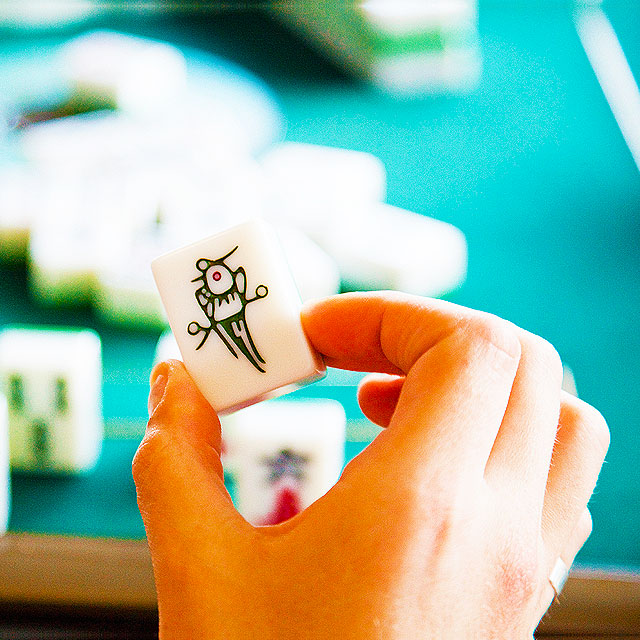域名 Majiang.net 正在出售中,如果您对该域名感兴趣,请点击这里提供您的报价。
The domain name Majiang.net maybe for sale. Please click here if you would like to make an offer.
Majiang Rules
There are many variations of Majiang. In many places, players observe one version, and are either often unaware of other variations, or claim that other variations are incorrect. Although many variations today differ only by scoring, there are several main variations of Majiang.
Chinese Classical Majiang is the oldest variety of Majiang, and was the version introduced to America in the 1920s under various names.
Hong Kong Majiang or Cantonese Majiang is the most common form of Majiang, differing in minor scoring details with the Chinese Classical variety.
Japanese Majiang is a standardized form of Majiang in Japan, found prevalently in video games. In addition to scoring changes, the rules of riichi and dora are unique highlights of Japanese Majiang.
Western Classical Majiang is a descendant of the version of Majiang introduced by Babcock to America in the 1920s. The evolution of Majiang in America led to American Majiang. Today, this term largely refers to the Wright-Patterson rules, used in the U.S. military, and other similar American-made variants that are closer to the Babcock rules.
American Majiang is a form of Majiang standardized by the National Mah Jongg League and the American Mah-Jongg Association that has the greatest divergence from traditional Majiang, with the introduction of Joker tiles, the Charleston, as well as melds of five or more tiles, and eschewing the Chow and the notion of a standard hand. Because of this divergence, the NMJL and AMJA variations (which differ from each other by minor scoring differences) is commonly referred to as Majiangg (with two Gs, possibly hyphenated). Purists of Majiang claim that the divergence from standard Majiang makes American Majiang not a "true Majiang", and thus should be considered a separate game in and of itself.
Other variants include Fujian Majiang (with Dadi Joker), Taiwanese Majiang (each player would have 16 tiles), Vietnamese Majiang (with 16 different kinds of joker), and Filipino Majiang (with Window Joker).
In 1998 the China State Sports Commission, in the interest of changing Majiang from an illegal gambling game to an approved 'healthy sport', published a new set of rules, now generally referred to as Chinese Official rules or International Tournament rules. The principles of the new, 'healthy' Majiang are: no gambling - no drinking - no smoking. On international tournaments, players are often grouped in teams to emphasize that Majiang from now on is considered a sport.
The new rules are highly pattern-based. The rulebook contains 80 combinations, based on patterns and scoring elements popular in both classic and modern regional Chinese variants. Some table practices of Japan have also been adopted. In order to go out, players must score at least 8 points. Points for flower tiles (each flower is worth 1 point) may not be added until the player has scored 8 points. The winner of a game receives the score of his winning hand in points from the player who discarded the winning tile, plus 8 basic points from each player; in the case of zimo (self drawn win), he receives the value of his winning hand plus 8 points from all players.
The new rules were used in an international tournament first in Tokyo, where in 2002 the first World Championship in Majiang was organized by the Majiang Museum, the Japan Majiang Organizing Committee and the city council of Ningbo, China, the town where it is believed Majiang most likely originated. One hundred players participated, mainly from Japan and China, but also from Europe and the United States. Miss Mai Hatsune from Japan became the first world champion. The following year saw the first annual China Majiang Championship, held in Hainan. The next two annual tournaments were held in Hong Kong and Beijing. Most players were Chinese, but players from other nations attended as well.
In 2005, in the Netherlands, the first Open European Majiang Championship was held, with 108 players. The first prize was won by Masato Chiba from Japan.
Critics say that these new rules are unlikely to achieve great popularity outside of tournaments, since regional variations are well-entrenched. They also complain that the game is excessively complex, even by normal Majiang standards. But those who advocate the New Majiang claim that it is not meant to replace existing rules, but only to act as a standard for international Majiang events.
